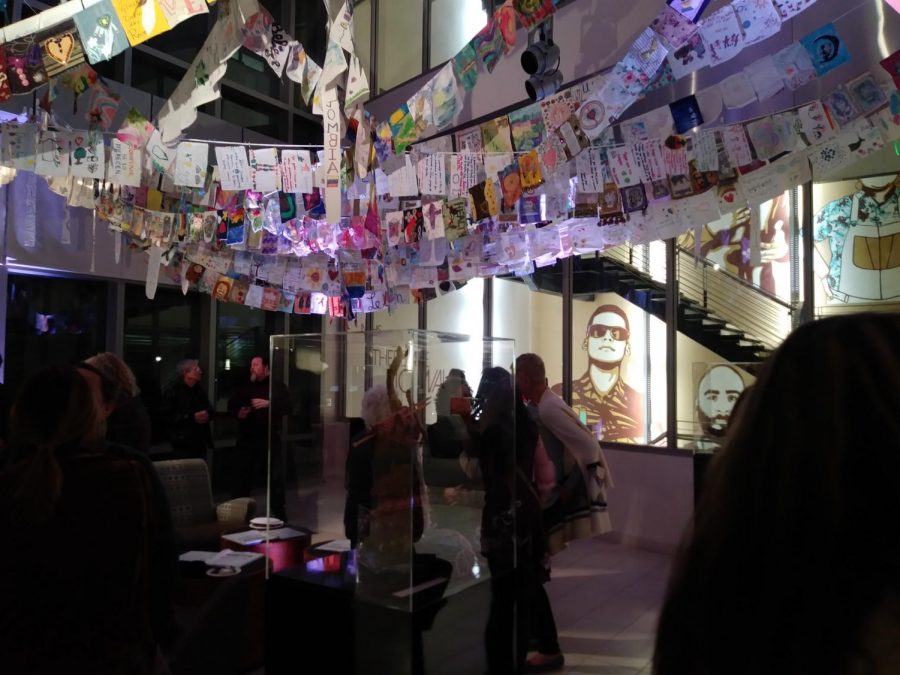Expressive arts therapist speaks on Hope Made Visible exhibit
February 22, 2020
Hope Made Visible is a traveling art project currently featured at the University Library Gallery that will be on display through May 2020. On Feb. 13, CSUSM hosted Dr. Alessandra Colfi, the creator of the project, for a presentation on the exhibit.
Dr. Colfi is a noted expressive arts therapist who seeks to improve patients’ wellbeing through art. She said that the inspiration for the project came from Tibetan prayer flags, which she describes as being a “symbolic means to promote peace, compassion, strength and wisdom.”
Their purpose is to be “hung to bring messages and blessings, which spread across mountains, valleys, rivers, into lifetimes and spaces, bringing peace and compassion, as well as peace to all beings across the world.”
The meaning behind the Tibetan prayer flags inspired her to use this concept with cancer patients from all over the world. She said the flag making was not only limited to patients but “included the patient’s family, friends and collective communities to contribute their own flags in solidarity.”
She accounted that the project, which has 1,500 flags, “has been a journey of spreading hope, empathy, and compassion, fostering healing communication for patients to connect to others through art expression despite not ever meeting, allowing them to know that they’re not alone and provides them with validation of their experiences, struggles, sufferings and brings hope, because everybody shares what gives them hope.”
Dr. Colfi then did a breakdown of the healing components within the project. Her method uses expressive art therapy that is integrative, patient-centered, awareness-oriented and mindfulness-based. She explained that “expressive art therapy is a complementary care modality, where the focus of expressive arts in a healthcare setting is to provide avenues for self-expression, self-reflection, patient-centered safe environments with an emphasis on quality of life; meaning safe in the physical sense and safe in terms of nonjudgmental environment.”
One of the therapeutic aims that she encourages upon her patients is “practicing letting go of judgment, whether it be about themselves or whatever they’re doing or experiencing…let things be, accept what is happening and know that it can be transformed.”
“The way we tell stories through art is through an organic layering of each feeling, experience, impression, that comes together in colors and shapes as layers of a soul space,” said Dr. Colfi. “Each flag is a soul space and that is where the transformation occurs.”
She believes her work through art is to help put together all the broken pieces of patients and produce something beautiful through expression. One of her many motivating statements during the presentation was that healing doesn’t mean the damage never existed, it means that the damage no longer controls our lives – she described this as true healing.
In sum, she said that expressive arts stimulates awareness, resilience, empathy, compassion, interconnectedness and transforming the consciousness of individuals affected by cancer and their communities. S
he is hopeful for humanity to develop and live in these virtues as the movement of healing has moved around the world and hopefully expand to include the relationship between human beings and nature.
Following the discussion, the audience members had the opportunity to create their own flag of hope. Next, Dr. Colfi led participants in a Zumba session on the patio outside the Reading Room. Lastly, the evening ended with most guests making their way to the University Library Gallery to view the full exhibition of Hope Made Visible.


